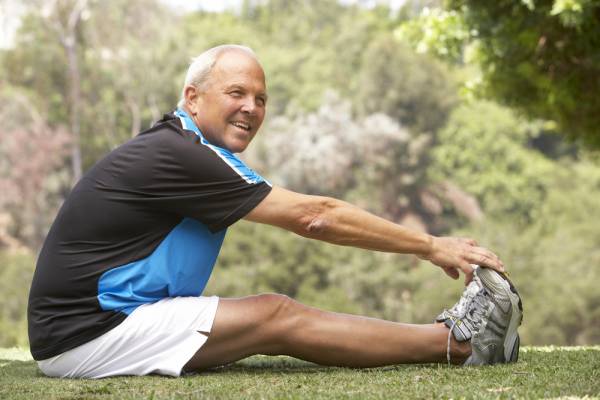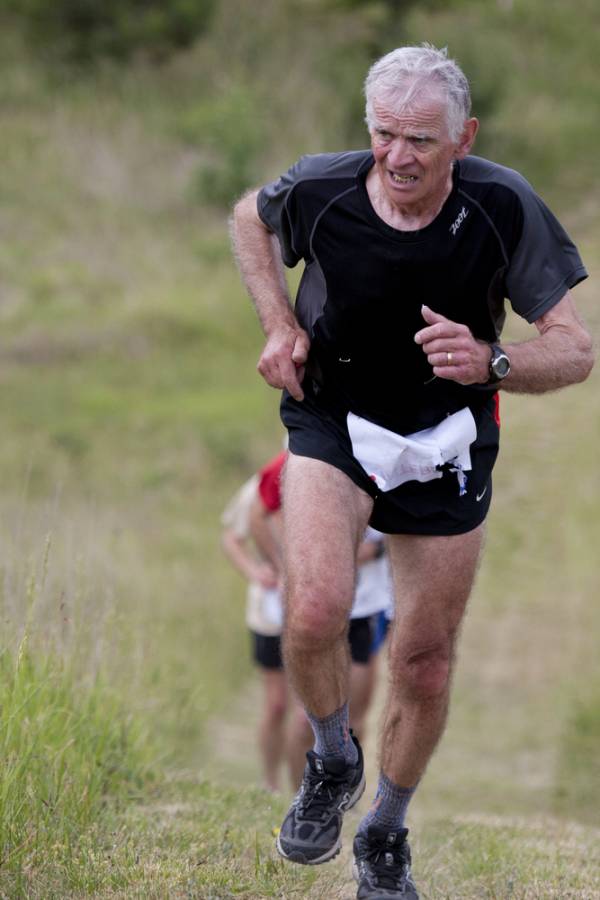An old bull and a young bull are standing on top of a hill overlooking a herd of cows. The young bull turns to the old bull and says, “Let’s run down and **** a cow.” The old bull ponders this for a moment, turns to the young bull and says, “Let’s walk down and **** them all”.
Growing old disgracefully has it’s benefits. There’s the beach for starters, and never having to worry about being mistaken for a beached whale if I take my shirt off. There’s the way people’s eyes kind of bug out and the look of surprise on their face when I tell them I’m over forty, too, when they complain about being out of shape because they’re over forty. And, of course, there’s the way I can tell tales of my past accomplishments to the youngsters I train, while still subtly letting them know the old man could still whoop their ass (provided someone would just give me a hand to get up first!)
I like to think the body has a maximum of ten dollars it can spend in any given session or even over any cycle of training. If I spend all my money on trying to get stronger, for instance, how much do I have left over to spend on injury prevention? Because as you age, the moment you stop training you start sliding back quickly.
So what are the secrets to keeping your body in shape as you age and spending your money where it will have the most benefit?
1. Movement
This is number one because it is number one. A lifetime of activity likely means a lifetime of injuries. Rolled ankles, twisted knees, shoulder impingement – and that’s if you’ve never even done something rough like Brazilian jiu-jitsu (BJJ). If you’re into more extreme things – moto-cross, BJJ, mixed martial arts, adventure racing – then add even more and bigger injuries. Every single one of these has an impact on the way you move and every single change to the way you move causes potentially more issues further down the line.
 I have to shake my head when people start trying to tell me that static stretching is “bad for you.” Uh-huh. That’s why all the top athletes in the world static stretch, even the ones who apparently will suffer from diminished force production as a result. Ian King once said to me that for every hour of active work you do you need to spend an equal amount of time on recovery work – foam rolling, massage, ice baths, stretching, mobility, etc.
I have to shake my head when people start trying to tell me that static stretching is “bad for you.” Uh-huh. That’s why all the top athletes in the world static stretch, even the ones who apparently will suffer from diminished force production as a result. Ian King once said to me that for every hour of active work you do you need to spend an equal amount of time on recovery work – foam rolling, massage, ice baths, stretching, mobility, etc.
Do not get caught up in the dynamic warm up/mobility hype. Static stretching IS the fountain of youth. Charles Poliquin estimates it takes six weeks of stretching six hours per week to see appreciable gains. From my own experience I know that stretching every day made a tremendous difference to my abilities and to all my clients.
2. Movement
Yes, it’s that important it’s #1 and #2. My warm up consists of three parts:
- Static Stretching – how out of vogue am I? I have found distance work, as well as most gym movements, make my “corners” tight. I think of my body as having inside and outside corners – the areas inside and outside my hips, usually called adductors and abductors, as well as the flexors and extensors. Stretching these make a TON of difference to how well I move and train. The hips are the centre of athletic movement – even missing a few degrees of hip extension can make the difference between running well and barely running – so take the time to loosen these up. The more injuries you have accumulated likely the longer you will need to spend on stretching.
- Mobility – a Daily Dozen of mobility exercises.
- Primitive Movements – Gray Cook termed this phrase and it constitutes crawling, rolling, and rocking movements. The basic version is that these first motor patterns we performed as babies drive all our other motor patterns and spending some time on them really fires up the body and switches on everything. The final stage of my warm up is some rocking, crawling and then a lap walking on my hands. (For more information go to www.becomingbulletproof.net).
3. Strength
Once you hit a certain age lifting heavy weights will not agree with you. Trust me, you’ll know when you get there. It doesn’t mean you can’t lift heavy, it just means you need to be smarter about when, how often, and even how many times you do.
I hate to say it, but at forty your best years are behind you. Sorry if that is unpleasant, but there’s a very real reason why you don’t see any forty year olds winning in strength and/or power sports at the Olympics – because their performance is declining. I’m not saying don’t train hard. I’m saying be realistic about your body and what is capable of doing and recovering from. Heavy frequent squatting WILL make your spine feel awful. Hundreds of heavy pull ups WILL make your elbows hurt. And lots of heavy pressing (flat or standing) WILL make your shoulders hurt.
So be smart about it – it is far better to avoid injuries in the first place than to have to spend time training around them and rehabbing them. For example, for kettlebells I could do straight presses one day, seesaw presses another and then just use get-ups the third. This variety will stop me overusing one motor pattern and risking injury. Somewhere between 3-5 sets of 3-5 reps of 3-5 exercises will be enough to maintain strength without hurting you. Then, when you need to ramp it up for an event you can train hard for a few weeks, spending your ten dollars, but knowing you’ve saved up for this event by conscientiously stretching and limiting the number of potentially damaging reps you do in training leading up to your hard training block.
4. Move
People never do things “middle.” Life is a like a seesaw. We start at one end, realise we’re unbalanced, and rush to the other side. Then we get there, realise we’ve come unbalanced somewhere else and rush over there. What we really need to do is slowly move more towards the middle.
 Somehow the fitness industry has got people to believe they don’t need to work aerobically. They cite studies (one in particular) that say aerobic training is over rated for fat loss and then decide to do all training anaerobically. Fat loss aside, that’s a square peg in a round hole situation if ever there was one. Humans are the most aerobically powerful animals on the planet and ignoring training your aerobic system goes against 750,000 years of human evolution.
Somehow the fitness industry has got people to believe they don’t need to work aerobically. They cite studies (one in particular) that say aerobic training is over rated for fat loss and then decide to do all training anaerobically. Fat loss aside, that’s a square peg in a round hole situation if ever there was one. Humans are the most aerobically powerful animals on the planet and ignoring training your aerobic system goes against 750,000 years of human evolution.
Cooper’s original studies on aerobic training in the 1970s never advocated hundreds of miles a week of running. Instead they advocated building up to a mile and a half of running a few times per week. Like it or not, we’re really not that far out of the trees and we should pay attention to what our bodies were designed for. Aerobic training has many, many positive benefits, most importantly heart health, which should be a prime concern for ageing active individuals.
Swimming is my main tool here – there’s something healing about the water and it’s cold effects on the body. Swimming easy allows me to cover my needs to move aerobically, as well as some of my recovery needs via cold-water immersion. I’d even go so far as to say that backstroke is quite possibly the single best exercise one can do to reverse the ageing process – you get out of flexion, work into external rotation and extension, can do thousands of reps easily, which over time will help to reverse all the years spent sitting in flexion and working in internal rotation, and the cold does some amazing things for the body such as increase your metabolism, flush toxins, and even increases testosterone production!
There’s no reason being over forty means you have to stop training. What it means is you have to stop training like a twenty year old, or even a thirty year old. Paying attention to how you move, recover and how your entire body works will pay bigger dividends in the second half of your life than worrying about how fast you are, or how much weight you lift.






